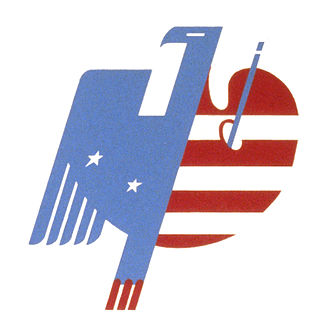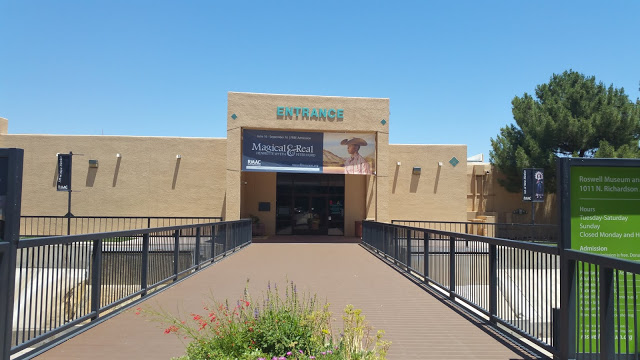As with last month, I’ve continued working my way through the Holger Cahill papers, perusing field reports, correspondence, memoranda, and other kinds of documents. Let’s take a look at some of the things I’ve learned.

Although each of the art centers had their own unique issues in terms of local politics and logistical challenges, I’ve noticed some recurring themes throughout these narratives. One of the most prominent is the FAP’s concern over professionalism. Time and again, I’ve read letters between FAP administrators expressing concern over the quality of work being done at the art centers. They worry that the staff isn’t sufficiently qualified to do the work, that the kind of art appreciation being offered is too passive, or that not enough of a connection is being made between art and daily life. Indeed, at one point Cahill recommended shutting down an art center in Nashville altogether because he believed it wasn’t sufficiently grounded in FAP philosophies, arguing that they’d be better off starting over than working with what was already there. In one field report from 1938, Daniel S. Defenbacher recommended severing ties with the Roswell Museum, arguing that its focus on local history collections and the absence of art classes didn’t align with the art center philosophy (Roswell remained affiliated with the program until 1942, when it struck out on its own). Even art centers the FAP considered successful, such as one in Butte, Montana, were also scrutinized for what they regarded as unprofessionalism, concluding that while the programming wasn’t necessarily up to their standards the community seemed to appreciate it.
Nor is this concern over professionalism limited to the art centers. In addition to going through field reports and other documents pertaining explicitly to the community art centers, I’ve also been going through Cahill’s correspondence for any indirect references. As a result, I’ve been learning more about other FAP initiatives, particularly the Index of American Design. Many of these letters address logistical issues such as how to locate objects or who should supervise which sections, but there are also quite a few letters expressing frustration over the quality of the images being produced. In letter after letter, I found passages describing the paintings as terrible, bad, or otherwise of poor quality. While I knew that the Portfolio of Spanish Colonial Design had been criticized by the FAP for what it considered an inconsistent approach to illustration, I hadn’t realized the extent to which this critique extended to other projects.
This concern over professionalism or the ability to produce work of sufficient quality is something I’ve been thinking about more deeply as a result of going through these documents, particularly in light of contemporary critiques of museum employment policies. On the one hand, you could argue that the FAP’s concerns over professionalism reflects its commitment to serving the public and providing them with worthwhile programming. But these critiques can also become a form of gatekeeping, with concerns over professionalism touting one kind of art employment over another in terms of presentation or knowledge. It makes me wonder how many potential employees were excluded from working at art centers because their experience or background didn’t fit the FAP’s preferred profile.
You see this tension especially regarding the value of local vs out-of-state employees. One the one hand, community art centers were intended to reflect the interests of their local populations, usually by featuring the work of local artists or offering classes that reflected regional craft traditions such as weaving or ceramics. Yet when it came to employment, the FAP often relocated out-of-state employees rather than hire local staff, at least for the director or similar administrative roles. Indeed, in 1939, the FAP instigated a program where they essentially enrolled art teachers and other staff in a travel-exchange program, usually sending people from New York and other densely-populated, urban areas to more rural regions (Roswell participated in this initiative, with two teachers from New York spending six months there in 1939). The rationale was that these smaller communities would benefit from the training and insight of more metropolitan art teachers or administrators, while the people from the urban centers would get the opportunity to experience the creativity and resources of rural communities.
While I see the advantages to such an exchange program, the FAP’s preference for hiring out-of-state administrators also makes me wonder what local talent might have been overlooked. The FAP might have assumed that local workers may not have been qualified because they didn’t fit their expected profile of an educated art worker, but that doesn’t mean that they didn’t bring their own valuable skills, knowledge, or experience to the position, not least their own familiarity with the local community.

I’ve been thinking about this in relation to both my own experiences and more broadly those of the museum field. In each of my museum jobs, I’ve moved from another state. I not only had to learn a new collection, but a new community. And if I’m honest, I’m often so focused on the latter that I don’t good a great job with the former. I became especially aware of this while I was in Roswell, a place where many families had resided for several generations. I did good work there, but when I look back on it, I probably wasn’t the best fit for the museum. I often felt isolated and disconnected from the community I purported to serve, and I’ve wondered whether Roswell would have been better off with a curator who had grown up in that area, someone who was already familiar with the region’s histories and its various populations. I may have had the degrees and experience that made me seem like a desirable candidate, but someone who had lived there and actually gotten to know the community might have made for a better curator, or at least one who felt connected to the area.
It’s also a critique that’s been applied to museum work at large. Museums, particularly the larger ones, will often do national searches for their highest administrators, bringing in people from around the country believed to be the best qualified for the job. But who gets ignored as a result of this approach, and what patterns of inequity get replicated as a result of confining oneself to “top talent” or the “best qualified” professionals? How many potentially qualified locals get overlooked because they don’t have the kind of degree museums are looking for, or haven’t worked at the kinds of institutions associated with experience and prestige? Arguably one of the reasons why people feel disconnected from their museums is because they don’t represent them, not only in terms of collections, but also its staff.
As with so many of the issues affecting museums today, I don’t have a simple answer for these questions, or rather, I won’t answer them in today’s post. Answering them requires reassessing the infrastructure of museums themselves, why they operate the way they do, and whether that’s the most conducive to the community. In reading about community art centers and concerns over professionalism, I’m reminded that these issues aren’t necessarily new. But that doesn’t make them any less urgent.